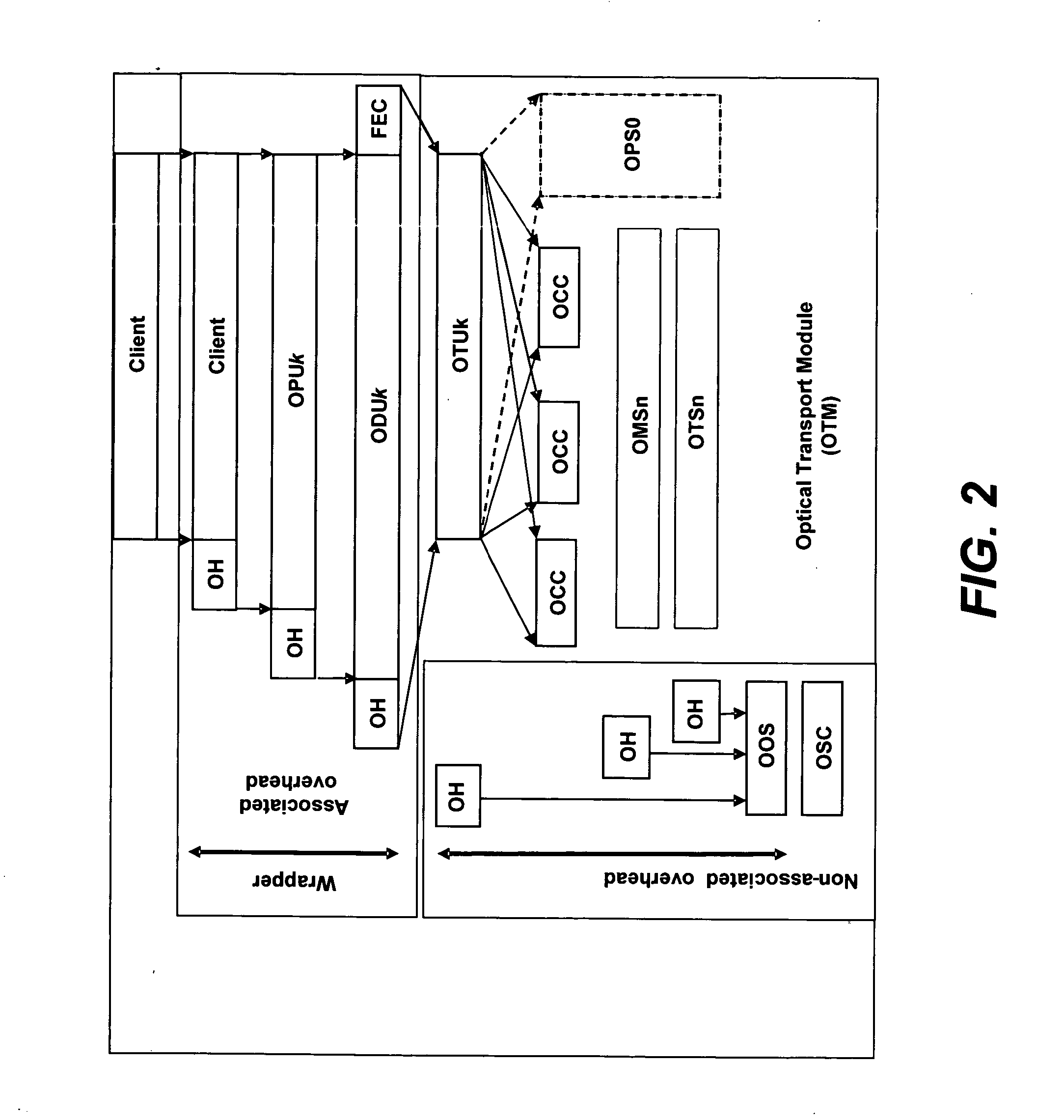Optical transmission network with asynchronous mapping and demapping and digital wrapper frame for the same
a technology of optical transmission network and asynchronous mapping, applied in data switching network, frequency-division multiplex, instruments, etc., can solve the problems of adding system costs (cogs), and achieve the effect of reducing the overall cost of manufacture, high cost, and high cos
- Summary
- Abstract
- Description
- Claims
- Application Information
AI Technical Summary
Benefits of technology
Problems solved by technology
Method used
Image
Examples
Embodiment Construction
[0034]Reference is initially made to what is called a digital optical network which is described in U.S. patent application Ser. No. 10 / 267,212, filed Oct. 8, 2002, entitled, DIGITAL OPTICAL NETWORK ARCHITECTURE, which is owned by the assignee herein and is incorporated herein by its reference. Such a network is inherently asynchronous, and makes extensive use of OEO conversions at signal regeneration nodes in the network to provide “3R” functionality which deals with any electronic signal reconditioning to correct for transmission impairments as well as 3R processing, such as, for example, but not limited to, FEC encoding, decoding and re-encoding, in addition to signal re-amplification (1R), signal reshaping (2R) and signal retiming (3R). In both of these respects (i.e., asynchronous operation and signal reconditioning), this network architecture partially runs counter to key architectural principles embodied in the ITU-T OTN architecture in general, and to the G.709 standard laye...
PUM
 Login to View More
Login to View More Abstract
Description
Claims
Application Information
 Login to View More
Login to View More - R&D
- Intellectual Property
- Life Sciences
- Materials
- Tech Scout
- Unparalleled Data Quality
- Higher Quality Content
- 60% Fewer Hallucinations
Browse by: Latest US Patents, China's latest patents, Technical Efficacy Thesaurus, Application Domain, Technology Topic, Popular Technical Reports.
© 2025 PatSnap. All rights reserved.Legal|Privacy policy|Modern Slavery Act Transparency Statement|Sitemap|About US| Contact US: help@patsnap.com



